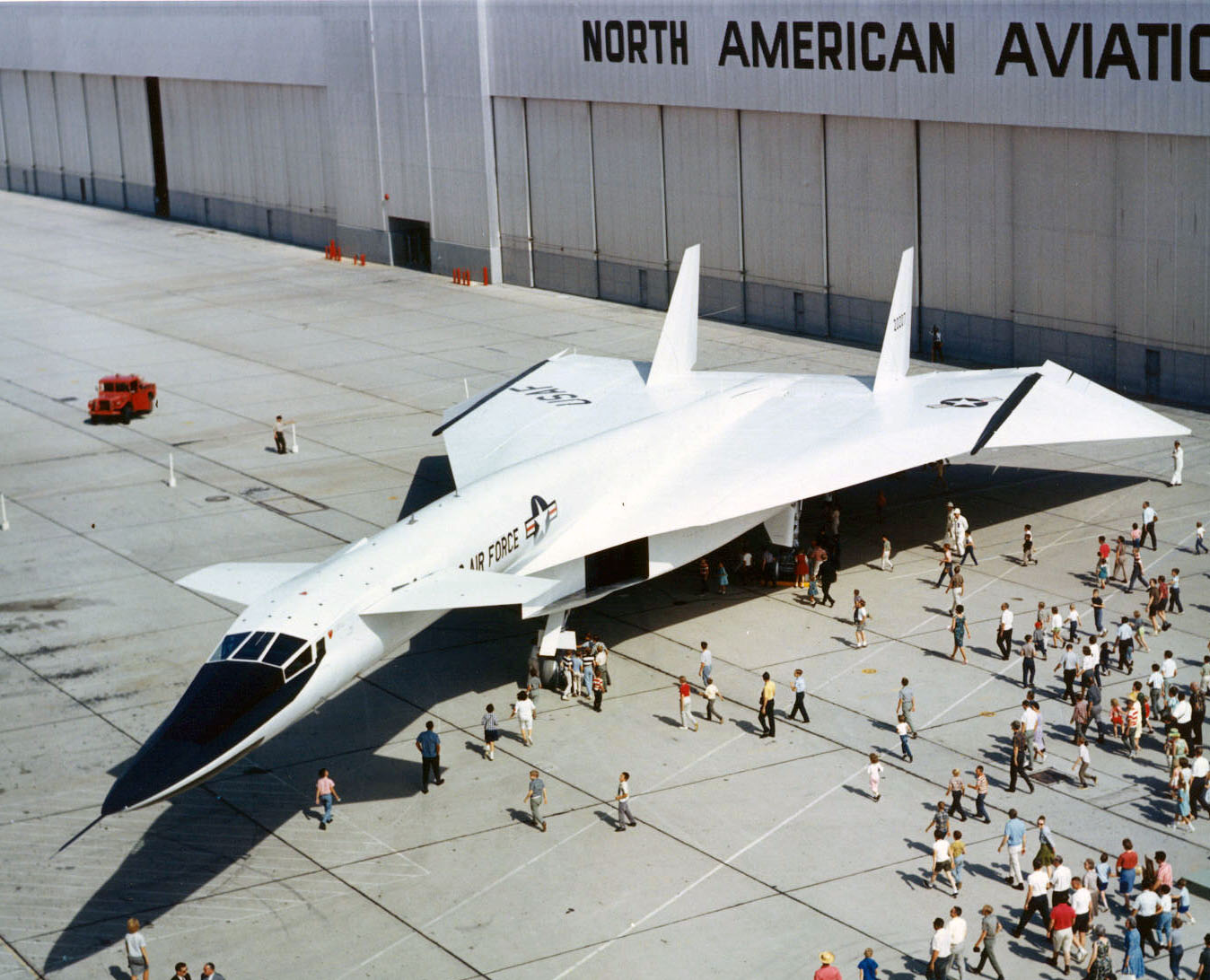Well done James

I think Mike knew the answer but he was just lingering on the side … hehe.
Here's a bit on the aircraft:
The North American Aviation XB-70 Valkyrie was the prototype version of the planned B-70 nuclear-armed, deep-penetration strategic bomber for the United States Air Force Strategic Air Command. Designed in the late 1950s by North American Aviation, the six-engine Valkyrie was capable of cruising for thousands of miles at Mach 3+ while flying at 70,000 feet (21,000 m).
At these speeds, it was expected that the B-70 would be almost immune to interceptor aircraft, the only effective weapon against bomber aircraft at the time. The bomber would spend only a few minutes over a particular radar station, flying out of its range before the controllers could position their fighters in a suitable location for an interception. High speed also made the aircraft difficult to see on radar displays and its high-altitude capacity could not be matched by any contemporary Soviet fighter.

As Mike eluded to in his post, one of the XB-70's crashed. On 8 June 1966, aircraft number two was flown in close formation with four other aircraft, an F-4, F-5, T-38, and an F-104, for the purpose of a photo shoot at the behest of General Electric, manufacturer of the engines of all five aircraft. With the photo shoot complete, the F-104 rolled inverted, passed over top, and struck the Valkyrie, destroying the rudders and damaging the left wing. The Valkyrie entered a spin and crashed following the mid-air collision. NASA Chief Test Pilot Joe Walker, piloting the F-104, and Carl Cross, copilot aboard the XB-70, were killed in the crash, while Al White, the XB-70's pilot, successfully ejected.
The remaining XB-70 Valkyrie bomber is in the National Museum of the United States Air Force near Dayton, Ohio. I've been lucky enough to see and touch this remarkable aircraft.
James, your turn
